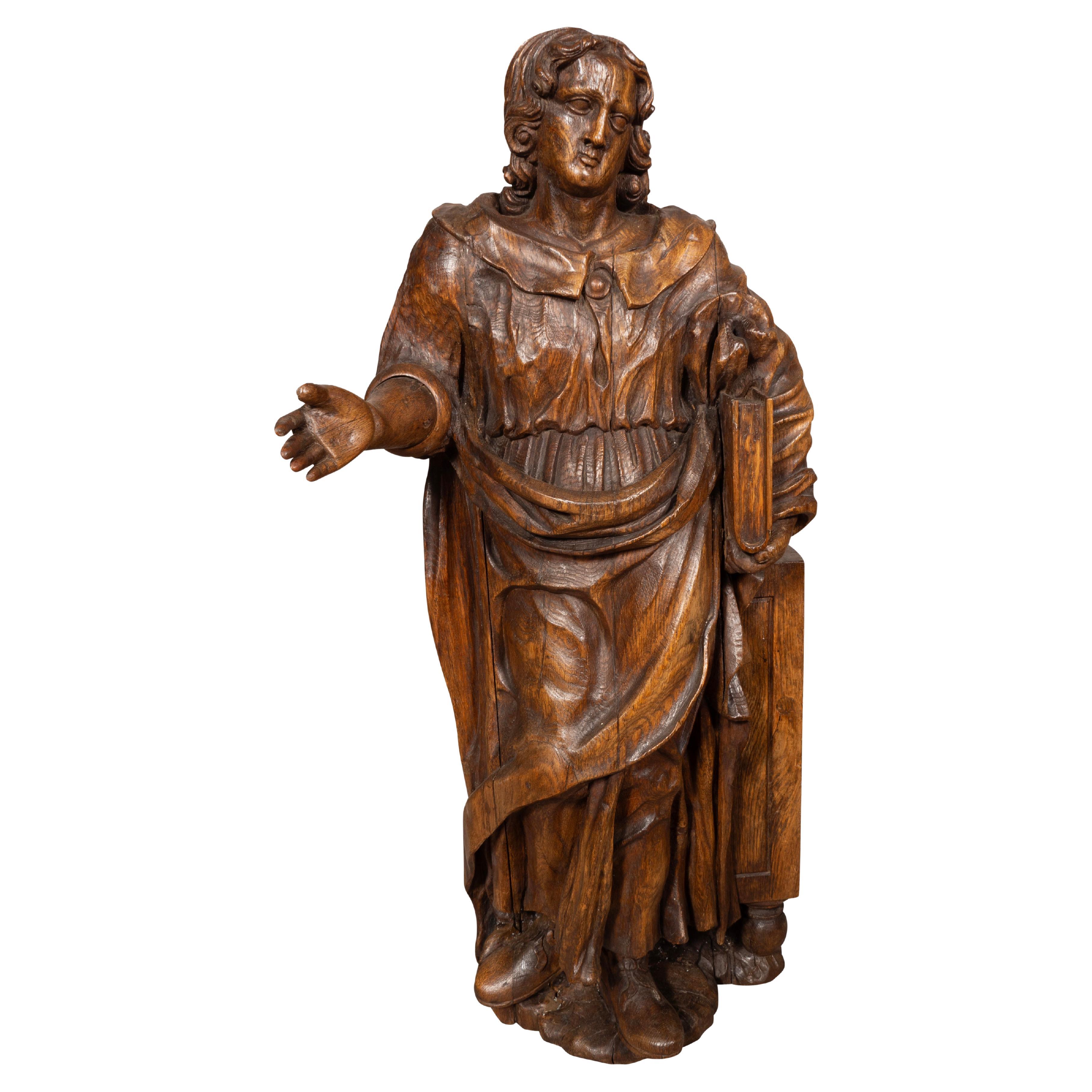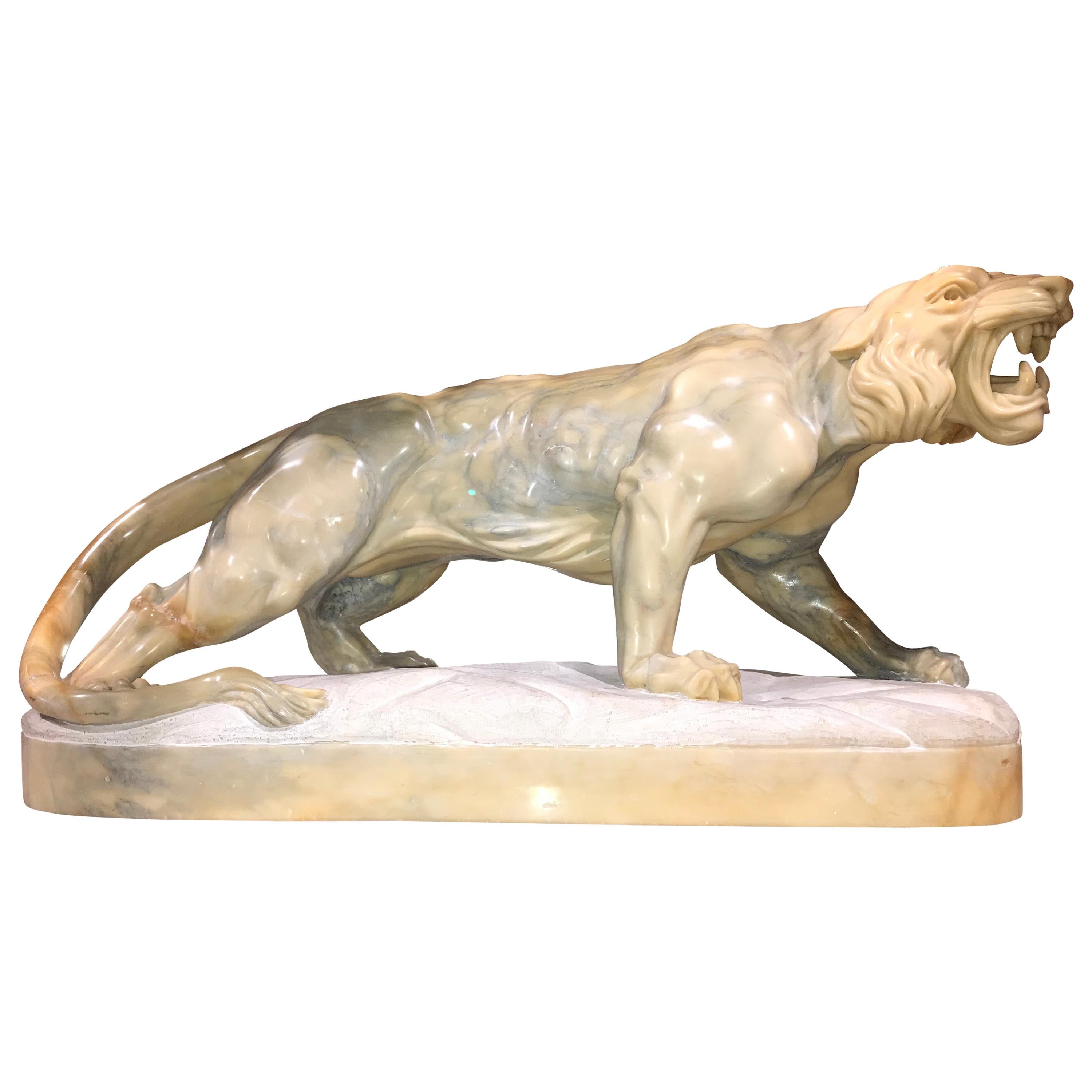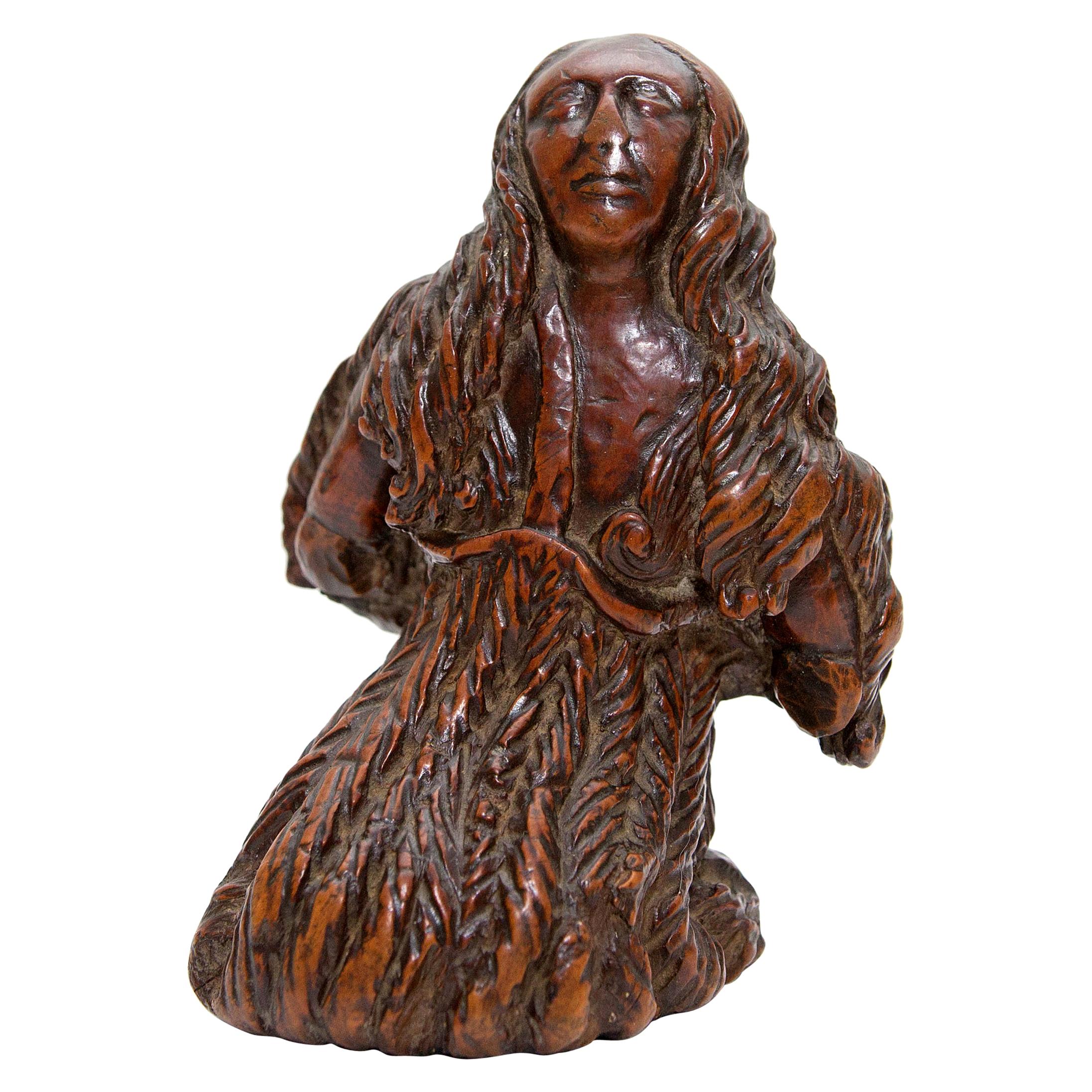Items Similar to A Fine Flemish Carved Figure of a Man
Want more images or videos?
Request additional images or videos from the seller
1 of 9
A Fine Flemish Carved Figure of a Man
About the Item
A Fine Flemish Carved Figure of a Man
Attributed to Henrick Douverman (c. 1480 - 1543) (sometimes known as Heinrich Douwermann)
Wood (oak)
Flemish
Early 16th Century
SIZE: 28cm high - 11 ins high
Henrick Douverman worked in Kalkar, in the Lower Rhine region, near to the present day Dutch border. A Netherlandish wood carver, he belonged to a circle of sculptors which included Heinrich van Holt and Arnt van Tricht, active in the first half of the 16th century. His preferred choice of wood was oak, rather than the ‘softer’ and kinder lime-wood.
Provenance:
Ex Private collection
- Dimensions:Height: 11 in (27.94 cm)Width: 2 in (5.08 cm)Depth: 2 in (5.08 cm)
- Materials and Techniques:
- Place of Origin:
- Period:
- Date of Manufacture:Flemish Early 16th Century
- Condition:Wear consistent with age and use.
- Seller Location:London, GB
- Reference Number:1stDibs: LU9363239431762
About the Seller
No Reviews Yet
Vetted Seller
These experienced sellers undergo a comprehensive evaluation by our team of in-house experts.
Established in 1989
1stDibs seller since 2023
- ShippingRetrieving quote...Ships From: London, United Kingdom
- Return PolicyA return for this item may be initiated within 14 days of delivery.
More From This SellerView All
- A Superb Pair of Neapolitan Carved Figures of DwarvesBy Francesco CelebranoLocated in London, GBA Superb Pair of Neapolitan Carved Figures of Dwarves Attributed to Francesco Celebrano (1729 - 1814) Marble Naples, Italy 18th Century SIZE: Male: 36cm high - 14¼ ins high Fe...Category
Antique Late 18th Century Italian Figurative Sculptures
MaterialsMarble
- European Carved Limestone Celtic Votive Head of a Male WarriorLocated in London, GBA Large European Carved Limestone Celtic Votive Head of a Male Warrior Wearing a Typical Flowing Moustache Small Beard and Curling Locks of Hair Stiffened with Lime Wash the Slit Mouth Open as if in Command Circa 1st Century BC - 1st Century AD Size: 31cm high, 22cm wide, 25cm deep - 12¼ ins high, 8¾ ins wide, 9¾ ins deep / 42cm high - 16½ ins high (with base) From about 500 BC, first Greek and later Roman historians mention peoples living in a large area of non-mediterranean Europe as Celts. These classical chroniclers seem to have recognised these communities as having sufficient shared cultural traditions to justify their being given a common name, ‘Keltoi’ by the Greeks, and ‘Celtae’ or ‘Galli’ by the Romans. The earliest allusions to Celts by such Greek historians as Herodotus (485 - 425 BC) were followed by Polybius (200 - 118 BC) and Livy (59 BC - AD 17) who discuss the expansion of the Celts from their central European homelands during the 4th and 3rd centuries BC. They document the presence of Celts in Spain, France, Italy, Greece and Asia Minor, specifically central Turkey. They testify to the successful Roman resistance to the Celts in Italy, after the ignominy of the sacking of Rome by them in 387 BC, and describe the huge defeat suffered by the Celts at the battle of Telemon in northern Italy in 225 BC. The Celts in Greece who sacked the sacred site of Delphi in 279 BC were defeated by King Antigonos Gonatas of Macedon in 278 - 277 BC and in Turkey by Altalus of Pergamon in 240 BC. The Celts in Spain fell under the shadow of Rome from 2nd Century BC and the Celtic heartland known by the Romans as ‘Gaul’ was conquered by the Romans under Julius Caesar in the mid 1st Century BC. Britain was not referred to as Celtic by the ancient historians, but Caesar recognised the close similarities between Britain and Gaul especially in their political organisation. Tacitus (55 - 120 AD) and others chronicled the conquest of Britain between 43 and 84 AD some mentioning the fierce nature of the Celts who went into battle naked. Celtic art therefore belongs to an artistic tradition in the early history of Europe which is no less important than that of the classical world. Art was central to Celtic identity and was closely related to the objects which it decorated. The Celts were used to seeing art as an integral part of their everyday lives. Provenance: Ex Finch and Co...Category
Antique 15th Century and Earlier European Busts
MaterialsLimestone
- A Fine Large Wedgwood Black Basalt Library Bust of the Ancient Greek Epic Poet HBy WedgwoodLocated in London, GBA Fine Large Wedgwood Black Basalt Library Bust of the Ancient Greek Epic Poet Homer Impressed Wedgwood Mark 1780–1812 Early 19th Century Size: 59cm high – 23¼ ins high Provenance: Ex Finch and Co...Category
Antique Early 19th Century British Busts
MaterialsTerracotta
- An Unusual and Rare English ‘Memento Mori’ Carved Shrine with Two Human SkullsLocated in London, GBAn Unusual and Rare English ‘Memento Mori’ Carved Shrine with Two Human Skulls to the underside, a carved ‘Dragonfly’ Marble 16th / 17th Century England Size: 36cm high, 28cm w...Category
Antique 16th Century English Figurative Sculptures
MaterialsMarble
- A Very Rare and Important Marble Relief of the ‘Resurrection of Christ’Located in London, GBA Very Rare and Important Marble Relief of the ‘Resurrection of Christ’ Attributed to the Master of the Mascoli Altar Marble Venice, Italy Second half of the 15th Century SIZE: ...Category
Antique 15th Century and Earlier Italian Renaissance Figurative Sculptures
MaterialsMarble
- A Small Bronze Group of a Prancing StagLocated in London, GBA Small Bronze Group of a Prancing Stag Bronze, gilt bronze South Germany; Nuremberg or Augsburg Late 17th Century / Circa 1620 SIZE: 12cm high - 4¾ ins high This bronze group, made in southern Germany, bears great similarities with the gilded silver table...Category
Antique 17th Century German Animal Sculptures
MaterialsBronze
You May Also Like
- Flemish Baroque Carved Oak Figure Of A ScholarLocated in Essex, MALarge figure standing with a book under his arm with hand extended.Category
Antique 1660s French Baroque Figurative Sculptures
MaterialsOak
- Pair Of Flemish Baroque Carved Oak And Ebony Figural CaryatidsLocated in Essex, MALikely from a piece of furniture. Featuring a well carved male and female over an ebony panel. Now used as candlesticks.Category
Antique 1670s Dutch Baroque Figurative Sculptures
MaterialsEbony, Oak
- Very Fine Carved Alabaster Figure of a TigerLocated in Atlanta, GAA very fine carved alabaster figure of a tiger Dimensions: D 10" H 17" W 33" CW4544.Category
20th Century Animal Sculptures
MaterialsAlabaster
- Hand Carved Dark Brown Wooden Figural Nutcracker of a Man, Germany, 1930sLocated in Barntrup, DEThis hand-carved, unusual nutcracker is in the figural form of an older man with a hat, sitting and holding an umbrella. Dimensions: Height 21.5 cm / 8.46 in, width 4.5 cm / 1.77 in,...Category
Vintage 1930s German Black Forest Figurative Sculptures
MaterialsWood
- 17th Century Flemish Carving of a Religious FigureLocated in Rochester, NYAntique carving of a saint or martyr. 17th century Flemish hardwood carving. Wonderful wear and rich color.Category
Antique 17th Century European Religious Items
MaterialsHardwood
- Large Carved Wood 'Man & Woman' Figural African Folk SculptureLocated in Glendale, CALarge carved wood 'Man & Woman' figural African Folk sculpture. An expressive pair of human figures exquisitely handcrafted from richly colored wood and mounted independently on a me...Category
20th Century African Folk Art Figurative Sculptures
MaterialsMetal





